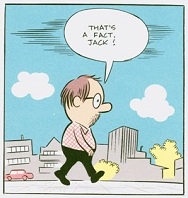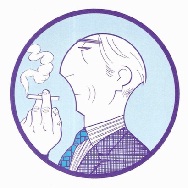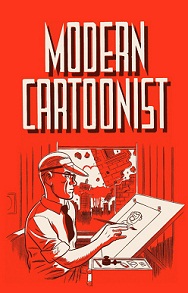 English version at the end of the page.
English version at the end of the page.
Paul Hornschemeier è il creatore di Mamma, torna a casa (Tenué. Editori dell’immaginario) e I tre paradossi (Comma 22).
Questa intervista esclusiva è stata possibile grazie ad un intenso scambio di e-mail.
-Quando è nata la tua passione per il fumetto e cosa ti ha spinto a lavorare in questo mondo?
Sono appassionato di cartoons e comics da quando ero un bambino. Ho iniziato facendo disegni tipo Batman & Robin a tre\quattro anni; ma ho sempre avuto poche occasioni di leggere fumetti, eccezione per quelli che trovavo nei negozietti o alle fiere di paese. Mia madre aveva vari lavori di Edward Gorey, ed io amavo i cartoons del New Yorker e i libri di Maurice Sendak anche se non avevo molte possibilità per recuperarne. Detto questo, ho iniziato a lavorare a fumetti miei quando avevo circa 4, decidendo di svolgerla come carriera già a 14\15 anni.
-Nei tuoi lavori c’è una forte componente filosofica. Quando è nata questa passione?
Entrambi i miei genitori sono laureati in Filosofia ed io sono stato sempre un ragazzino solitario, credo quindi che passare molto tempo a riflettere mi apparve naturale, nel bene e nel male (probabilmente nel male). Pensare e ripensare alle cose è un atteggiamento di cui non mi sarei mai potuto liberare quindi ho deciso di conseguirne una laurea.
-La psicologia dei personaggi è un’altra parte importante del tuo lavoro. Come riesci ad esplorare così nel profondo le relazioni tra i personaggi?
Diciamo che non mi pare di esplorare così profondamente i miei personaggi, piuttosto mi appaiono come persone reali (il che probabilmente la dice lunga sulla mia salute mentale) cosicchè scrivo di quello che capita attorno o dentro di loro. E’ un luogo comune ma completamente vero che dopo aver creato nella tua mente un personaggio questi inizierà poi a scriversi da sè; lavorare su un personaggio ben caratterizzato è più seguire le direttive dello stesso piuttosto che scriverlo. Ti dirà lui stesso cosa deve fare o dire. Chiaramente, tutti i personaggi sono parti dell’autore e in pratica e come parlare da soli. Ecco ancora un minore forma di pazzia, fortunatamente socialmente accettabile.
-Molti dei tuoi libri parlano della relazione genitori\figli; Mother, come home è puramente drammatico mentre I tre paradossi è molto ironico e con diverse soluzioni per la storia. Sentivi la necessità di cambiare stile o semplicemente volevi sperimentare qualcosa di nuovo?
Anche se I tre paradossi e Mother, come home parlano principamente di famiglia sono fondamentalmente due storie diverse, quindi ho immaginato soluzioni diverse. Questa è una cosa che non capisco di molti autori: tendono ad utilizzare le stesse soluzioni sempre, anche di fronte a due soggetti o stilemi narrativi totalmente differenti. L’estetica, i dialoghi, il ritmo, tutto deve essere funzionale alla storia, o almeno è così che io la vedo. Usare la stessa equazione per ogni problema scientifico sarebbe pessima scienza ed io credo che sia praticamente lo stesso per l’arte e la letteratura.
-Leggendo I tre paradossi sono rimasto colpito dallo stile cartoon alla Dell utilizzato nell’episodio di Zenone. Sei molto legato a questi vecchi comics? Hai qualche aneddoto da condividere con noi?
I fumetti della Dell erano tra quei pochi fumetti che potevo trovare da ragazzino, ed era il tipo di fumetti che aveva mio padre quando era giovane (alcuni dei quali adesso ho io) ma eccezione fatta per questo non ho alcun legame particolare con essi. Sono più legato alla cover originale da cui ho preso spunto per quella di Zeno: un vecchio numero di Rocky & Bullwinkle. I fumetti di Jay Ward e il suo character design hanno avuto grande influenza su di me e quando immagino una qualche rappresentazione fumettistica dell’Antica Grecia è al suo lavoro che penso immediatamente.
Creare quella parte del libro- molto pesante e davvero troppo filosofica per essere letta scorrevolmente- in uno stile molto cartoonesco, penso abbia aiutato ad alleggerire il soggetto ed a renderlo più assimilabile. Più i concetti sono complessi, più le linee e lo stile del disegno sono semplici: immagino sia una buona regola da seguire.
 –In Mother, come home c’è un forte utilizzo di simbolismi e metafore, davvero interessante! Puoi per favore spiegarci meglio questa scelta e, in particolare, la funzione della maschera-leone indossata dal ragazzino?
–In Mother, come home c’è un forte utilizzo di simbolismi e metafore, davvero interessante! Puoi per favore spiegarci meglio questa scelta e, in particolare, la funzione della maschera-leone indossata dal ragazzino?
Non voglio annoiare nessuno disaminando ogni simbolo e metafora che ho inserito, specialmente perchè non mi aspetto che tutto sia comprensibile. A volte metto qualcosa semplicemente per me, senza la presunzione che qualcuno la colga. Detto questo, sì, c’è un forte utilizzo di simboli, metafore ed oggetti impregnati di significato perchè volevo che un’importante parte del libro riguardasse la realtà, le emozioni\ricordi ed il modo in cui interagiscono tra loro. Perciò ho voluto che cose come un sandwich raggiungessero significati molto importanti mentre un luogo significativo lo diventa sempre meno. Ci sono molti mutamenti di significati e dei ricordi. Thomas non è completamente sicuro di ciò che ricorda perchè è un periodo tumultuoso della sua vita ed aveva solo 7 anni. In quest’ottica la maschera del leone prende diversi significati: è simbolo dell’amore di sua madre, uno scudo contro le esperienze dolorose, è uno strumento di potere, un giocattolo, un metodo per difendere suo padre dalle sue stesse emozioni.
 -Quando scrivi una storia cosa cerchi di trasmettere a chi ti legge? La prima sensazione che io ho provato leggendo due tuoi lavori è stata di evasione, di fuga dal mondo che ci circonda. C’è anche questo in ciò che vuoi trasmettere?
-Quando scrivi una storia cosa cerchi di trasmettere a chi ti legge? La prima sensazione che io ho provato leggendo due tuoi lavori è stata di evasione, di fuga dal mondo che ci circonda. C’è anche questo in ciò che vuoi trasmettere?
Credo che innanzitutto io voglia far provare al lettore quello che prova il personaggio nella scena e fare percepire a chi legge la logica della narrazione. Quando ti è chiaro ciò che qualcuno prova è molto più semplice capire perchè agisce in un determinato modo anche se magari non è una reazione che avresti tu normalemnte. Oltre ciò, non so bene cosa voglia trasmettere al lettore. Di sicuro la sensazione di fuga dalla realtà che hai provato in I tre paradossi e in Mother, come home è un tema molto vasto e presente in entrambi; ed è uno dei sentimenti che mi auguravo di trasmettere.
Fine prima parte.
English version:
Paul Hornschemeier is the creator of the Harvey, Eisner, and Ignatz nominated series Forlorn Funnies, as well as Mother, Come Home, The Collected Sequential, and The Three Paradoxes. Paul lives and works in Chicago.
-When did your passion for cartoons started and what made you start producing?
I’ve been interested in comics and cartoons since I was a child. I started drawing things like Batman and Robin when I was three or four years old. But I had very little exposure to comics, other than ones I would find at small markets or fairs. My mother had some collections of Edward Gorey, and I loved the cartoons of the New Yorker and the books of Maurice Sendak, but I didn’t have much exposure to comic books themselves. That said, I started drawing and making my own books when I was about four years old and got really serious about making comics when I was around 14 or 15 years old.
-In Your works there is a big dose of philosophy. When did you get this passion?
Both of my parents have degrees in Philosophy, and I’ve always been sort of a lonely kid, so I think spending lots of time thinking about things just came naturally to me as a child, for better or worse (probably for worse). Over-thinking things was something I could never get rid of, so I decided to go ahead and get a Bachelor’s Degree in it.
-The psychology of the characters is another important part of your books. What makes you explore so deeply in the relationship of the characters?
To some degree I don’t feel like I am exploring anything very deeply with my characters, I guess for more it’s just that they feel like real people to me (this is probably saying something unfortunate about the state of my mental health) and I’m writing down what’s happening to them or in them. It’s trite to say but completely true that once you’ve worked a character out in your head they write themselves; writing a well-formed character is less about writing and more about taking dictation from the character. They will tell you what they need to say or do. Of course, all of these characters are just splinters of the author, so it’s ultimately just you talking to yourself. Again, this is all just a lesser form of insanity and one that I’m glad is socially acceptable.
-Many of your books talk about the relationship between parents and their children; but Mother Come Home is purely dramatic, and The Three Paradoxes is full of irony and different solutions for the story. Did you feel the necessity to change your style or did you just want to experimenting different solution?
The Three Paradoxes and Mother, Come Home, while they both deal with families as their core subject, are very different stories, so I thought the solutions should be different. This is something I don’t understand with some authors: they tend to use the same solutions all the time, even in the face of radically different subjects or narratives. The aesthetic, the dialogue, the pacing, everything needs to fit the story, or at least that’s how I see it. Using the same equation for every science problem would be bad science, and I feel basically the same way about art and literature.
–Reading The Three Paradoxes I’ve been really hit by the Dell’s old cartoons style that you used in he episode with Zenone. Are you bond to this old comics or do you have any anecdote to tell us about?
Dell Comics were one of the few comics I could find when I was a kid, and these were the sorts of comics my Dad had when he was younger (some of which I have now), but beyond that, I don’t have any specific attachment to Dell. I have more of an attachment to what that specific cover (the Zeno cover) was lifted from: an old Dell issue of “Rocky and Bullwinkle.” Jay Ward’s cartoons and character designs were a big influence on me, and when I think of any sort of Ancient Greece cartoon representation, I immediately think of his work. And having that portion of the book – which could come across as very heavy and too philosophical to read very well – in a very cartoony style like that, I think that helped to lighten the subject and make it more palatable. If that had been drawn in a style closer to realism I think it would have felt very clunky. The heavier the ideas, the lighter the line and drawing style, I suppose that’s a good rule to go by.
-In Mother Come Home I notice a big use of symbol and metaphors, really impressing! Please can you explain more for us about this use and in particular the function of the lion-mask that the little boy wore?
I don’t want to bore anyone by dissecting every metaphor or symbol I put in the book, mostly because I wouldn’t expect someone to catch everything I put in there. Sometimes I’m just inserting things for myself, with no hope that anyone will notice them.
That said, there was a more overt use of symbols, metaphor, and objects loaded with meaning in that book because I wanted a large portion of the book to be about reality and emotion/memory and how those interact. So I wanted things like a sandwich to come to mean very heavy things, while a grave site becomes less and less meaningful. There is a lot of mutation of significance throughout the book like that, and a lot of mutation of memory. Thomas isn’t really sure if what’s he’s remembering is the way things actually happened because it was such an emotionally driven time in his life and he was only seven years old. In that vein, the lion mask takes on different meanings: it is a symbol of his mother’s love, it is a shield from harsh experiences, it is a method of empowerment, it is a toy, it is a way to shield his father from his own emotions.
 -When you write a story what do you try to transmit to your readers? The first sensation that I felt reading your two books was the feeling of evasion, escaping from this world that surrounds us. Was this something you tries to transmit?
-When you write a story what do you try to transmit to your readers? The first sensation that I felt reading your two books was the feeling of evasion, escaping from this world that surrounds us. Was this something you tries to transmit?
I think that first and foremost I want to make the reader feel whatever the character is feeling in the scene, and I feel that the reader then begins to “feel” the logic of the narrative. When you understand how someone feels, it’s far easier to understand why they would do this or that, even if “this or that” isn’t something you yourself would normally do. Beyond that, I don’t know what I’m trying to get across to the reader. I think your feeling that evading the world around us is a huge theme in both The Three Paradoxes and Mother, Come Home is completely valid. That was certainly one of the feelings I hoped to get across.
End first part.
traduzione a cura di Marco Sanfilippo.
















Pingback: Looking Forward | Conversazioni sul Fumetto
Pingback: Graphic Novel, anticipazioni delle uscite autunnali
Pingback: Graphic Novel, anticipazioni delle uscite autunnali | Indipedia – Indipendenti nella rete
Everything is very open with a very clear clarification of the issues.
It was really informative. Your site is very useful.
Many thanks for sharing!
It is that slightly creepy, Barbie doll whose legs
sit inside the roll of toilet paper, her usually crocheted skirt hiding the spare TP roll.
Holidays are when many of the presents are purchased and shared.
The oranges aren’t really suited to eating – it’s more like you are drinking fruit
than eating it, way too juicy.
You will get grants in a number of ways, though the most common method is by contacting government agencies.
This might be a great way to find a lot of details about various federal grants for individuals.
That’s where Ameridream is available in. If you have a home that has to have repairs or perhaps in desperate need of the remodel, check into refinancing your mortgage which has a FHA insured loan that may allow one to borrow the money that you have to make the improvements. Federal agencies might also provide funding help for single mothers.
I actually found this specific posting , “Paul
Hornschemeier – Intervista / Interview | Conversazioni sul
Fumetto”, especially enjoyable not to mention the blog post was a great read.
I appreciate it-Darwin
Educational post, it is nice to find creative content
online, I am honestly pleased to encounter a blog that is not full
of the ubiquitous dross, congratulations.
This specific posting, “Paul Hornschemeier – Intervista
/ Interview | Conversazioni sul Fumetto” workoutexpresswoodland.
com shows the fact that you truly fully understand just what exactly you
are writing about! I personally definitely am in agreement.
Many thanks ,Bonnie
Excellent post! We are linking to this great post on our website.
Keep up the good writing.
Great post! We will be linking to this great post on our site.
Keep up the good writing.
Pingback: Looking Forward | Conversazioni sul Fumetto